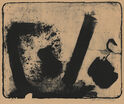
19th, 20th & 21st Century Fine Prints
707-546-7352 · fax 707-546-7924 · web: www.annexgalleries.com · email: artannex@aol.com
Julius Wasserstein Biography
Julius Wasserstein
American
1924–1985
Biography
Julius Wasserstein, painter, printmaker and teacher, was born to Dora and Morris Wasserstein on 17 May 1924 in Providence, Rhode Island and his family moved to San Francisco the following year.
During World War II, Wasserstein enlisted into the Army in 1943 and was discharged in 1946. With his G.I. Bill benefits, Wasserstein attended the California School of Fine Arts [later the San Francisco Art Institute] between 1950 and 1953 studying with David Park and Elmer Bischoff. In 1952, he attended painting seminars given by Hassel Smith and he experimented with printmaking, both intaglio and lithography, in James Budd Dixon’s classes. Wasserstein began working at the San Francisco Museum of Modern Art in 1952 as a preparator, a position he held for thirty-three years.
The California School of Fine Arts offered a new degree program in 1953 and Wasserstein was among the first graduates. He was included in group shows at the King Ubu Gallery in San Francisco and had his first solo exhibition there in 1954. That same year, Wasserstein had a solo show at the Lucien Labaudt Gallery, and, in 1956, his solo exhibition was featured at the Six Gallery in San Francisco. Between 1955 and 1958, he continued his studies at the San Francisco State College.
Wasserstein taught at the San Francisco Art Institute from 1960 to 1963 and, in 1961, he received the San Francisco Arts Association’s $1,000.00 Nellie Sullivan Award, given to a talented, promising artist in California. His work was included in group exhibitions at the San Francisco Art Association, the San Francisco Museum of Art, the Whitney Museum of American Art, the California Palace of the Legion of Honor, and the Santa Barbara Museum of Art.
On Wasserstein’s paintings, John Coplans wrote: He is an action painter “par excellence,” who demonstrates his enormous control over his technique like a superb athlete. Beautiful velvet black brush strokes, luscious clots of paints, spontaneous scribbles dug into the paint surface, elegant flourishes, deadly slashes: all demonstrate that he has learned his lessons well.
Julius Wasserstein’s work is represented in the collections of the Nora Eccles Harrison Museum of Art, Utah State University, Logan; the Victoria and Albert Museum, London; the Fine Arts Museums of San Francisco, California; and the Worcester Art Museum, Massachusetts.
Wasserstein died on 28 October 1985 in San Francisco.

